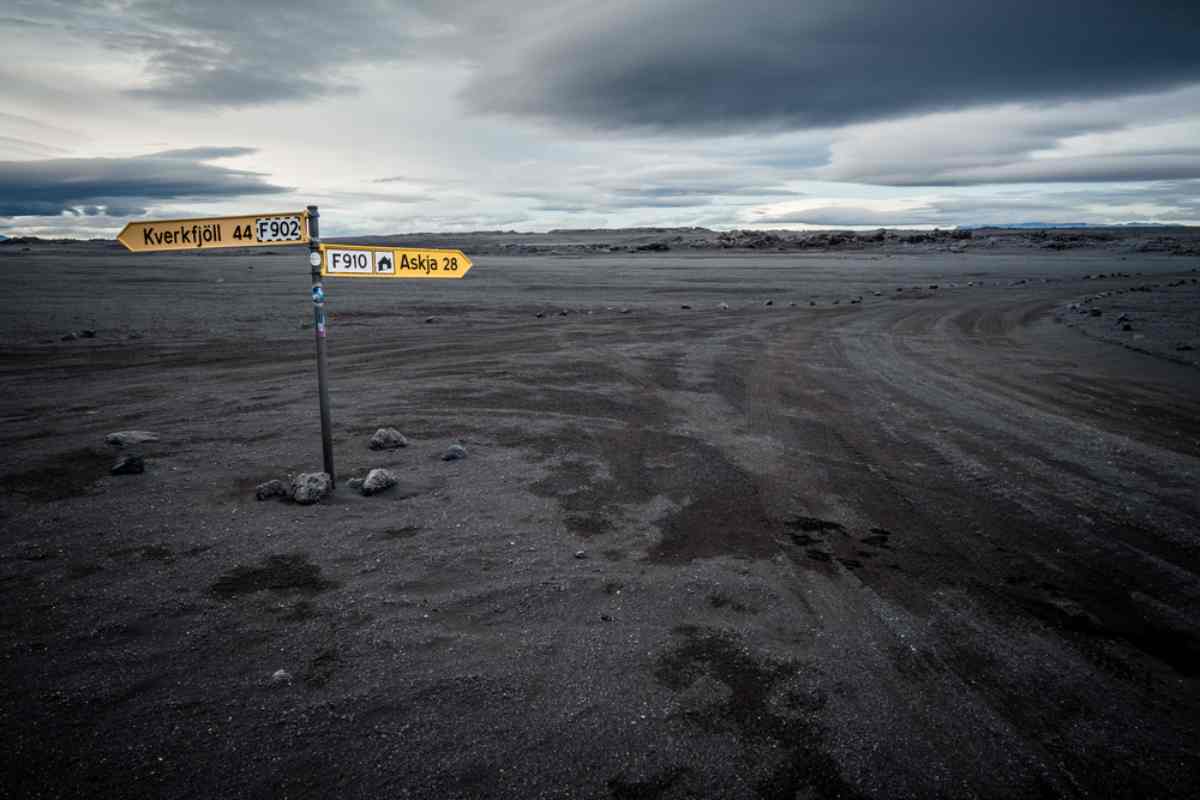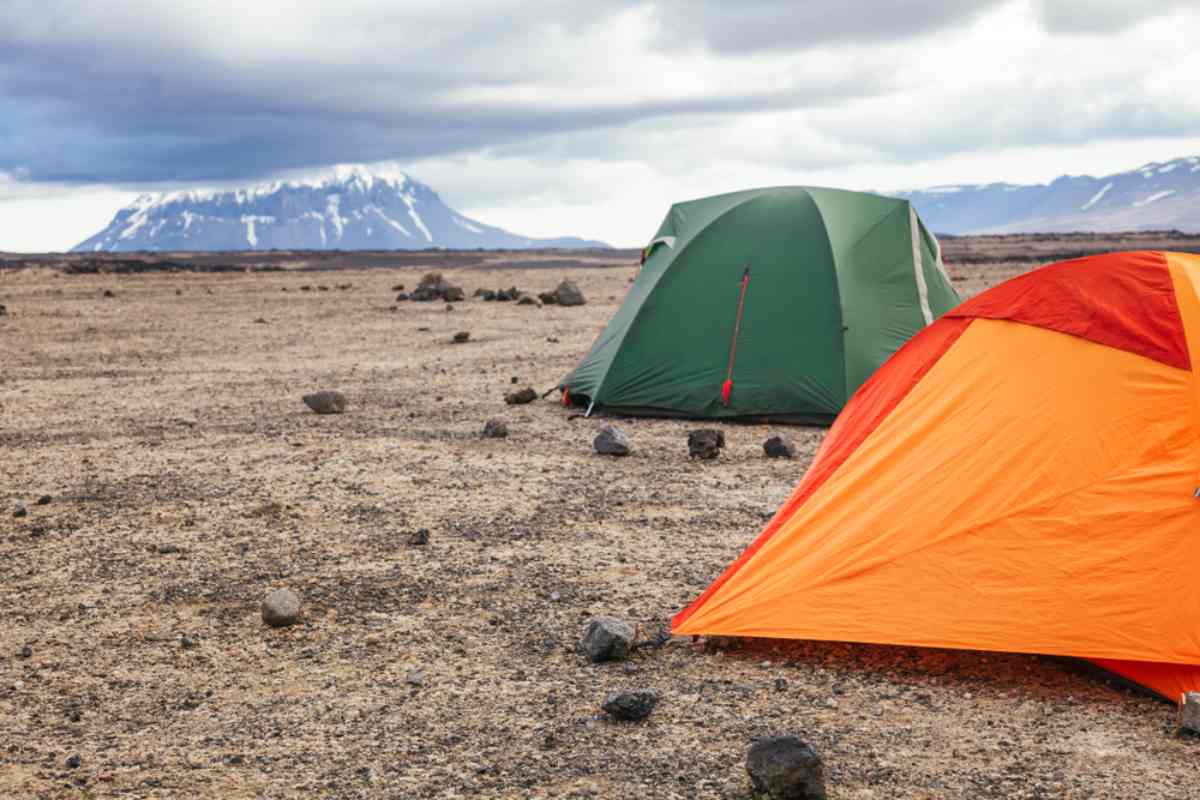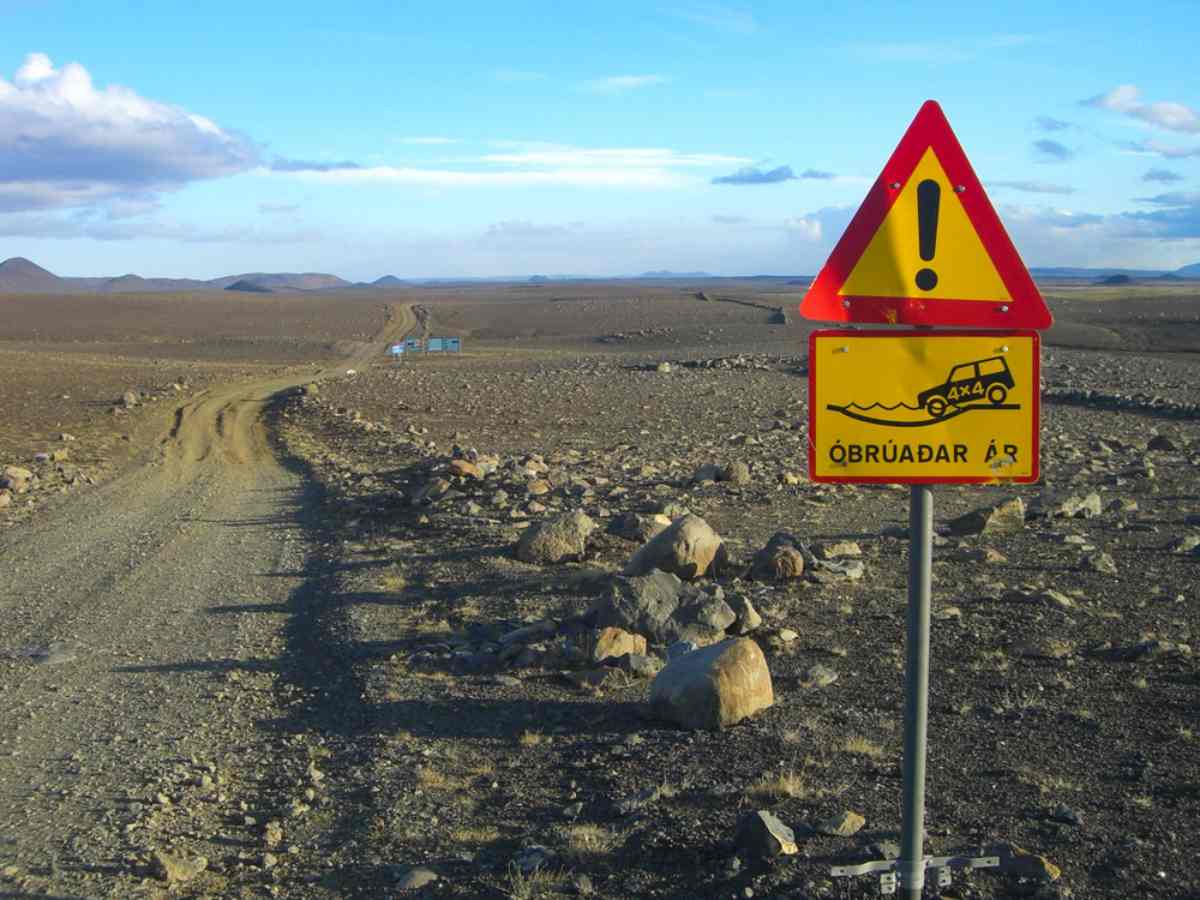22-09-2023

Nestled in the remote central highlands of Iceland lies Askja, an active volcano that has captivated the hearts of many travelers and scientists alike. Its unique volcanic landscape, combined with its rich history, makes it a must-visit destination for anyone venturing to Iceland.
Askja is a fascinating geological marvel located in Iceland. It's not just a single volcano but a series of nested calderas within the Dyngjufjöll mountains. The name "Askja," which means "box" or "caldera" in Icelandic, perfectly encapsulates its unique topographical features.
Standing tall with an elevation of 1,514 meters, Askja has been the site of numerous volcanic eruptions. Among these, the eruption of 1875 stands out, not only because of its magnitude but also because it led to a mass emigration from Iceland due to the ash fallout affecting agricultural output.
The caldera that we see today, filled with the deep Öskjuvatn lake, is a result of a series of eruptions, with the lake itself being a testament to the 1875 eruption's power.
Askja is nestled in the heart of Iceland's central highlands, precisely at coordinates 65°01′59″N 16°46′59″W. This location is remote and is characterized by its pristine beauty and untouched landscapes. However, its beauty comes with a touch of inaccessibility.
Due to its rugged terrain and the unpredictable Icelandic weather, the region remains accessible predominantly during the summer months. The roads leading to Askja are challenging, requiring sturdy 4x4 vehicles, and even then, they are only open for a limited period each year. This seclusion adds to Askja's allure, making it a destination for those truly seeking an off-the-beaten-path experience.

The ideal window to explore Askja is during the summer months, specifically from June to August. This period sees milder weather conditions, making the journey to and exploration of Askja more feasible and enjoyable.
The roads, which remain closed for a significant part of the year due to snow and challenging conditions, are open during these months. However, visitors should be well-prepared, as Askja is known for its unpredictable and often windy weather.
Even in summer, sudden weather changes can occur, so it's essential to pack layers and be ready for all eventualities. Checking weather forecasts and road conditions before embarking on the journey is always a wise decision.
Hiking: The diverse terrains of Askja offer hiking opportunities for both beginners and seasoned trekkers.
Exploring the Öskjuvatn lake: This lake, formed after the 1875 eruption, is the second deepest in Iceland and offers breathtaking views.
Visiting the Víti crater: A geothermal lake with warm waters, perfect for a relaxing dip.
Learning about its NASA connection: Askja served as a training ground for Apollo program astronauts, making it a site of historical significance.
While Askja itself doesn't offer accommodation, travelers can find mountain huts and a campsite at Dreki, near the Drekagil canyon. It's essential to book in advance, especially during peak months, to secure a spot.

Venturing to Askja is an exhilarating experience, but it's essential to be well-prepared to fully enjoy the journey. The remote location and unpredictable weather conditions demand careful packing. Here's a comprehensive list to ensure you're ready for your Askja adventure:
Weather-Appropriate Clothing: The weather can change rapidly in Askja. It's advisable to pack layers. Include lightweight thermal tops and bottoms, a mid-layer like a fleece or wool sweater, and a waterproof and windproof outer layer. Even in summer, temperatures can drop, so a warm hat, gloves, and a scarf might come in handy.
Sturdy Footwear: Given the rugged terrain, a pair of good-quality hiking boots with ankle support is essential. Ensure they are waterproof and have been broken in before the trip to avoid blisters.
Backpack: A comfortable daypack to carry essentials like water, snacks, and a first-aid kit is crucial. Make sure it's waterproof or pack a rain cover.
Navigation Tools: While guided tours will have this covered, if you're venturing independently, a map, compass, and possibly a GPS device can be invaluable. Remember, mobile signals can be weak or non-existent.
Sunglasses and Sunscreen: The reflection from the landscapes, especially if there's snow, can be intense. Protect your eyes and skin from the sun's UV rays.
Water and Snacks: There are no facilities at Askja, so bring enough water and some high-energy snacks. A reusable water bottle is ideal as there are streams where you can refill – the water in Iceland is pure and drinkable.
First Aid Kit: Basic first aid items like band-aids, antiseptic wipes, pain relievers, and any personal medications should be in your pack.
Camping Gear: If you plan to camp, ensure you have a good quality tent that can withstand wind, a sleeping bag suitable for cold temperatures, and a sleeping pad.

Camera and Binoculars: You'll want to capture the stunning landscapes, and if you're lucky, some wildlife. Don't forget extra batteries or a power bank, as cold can drain battery life quickly.
Headlamp or Torch: Especially if you're staying overnight or venturing into any of the caves.
Personal Essentials: This includes toiletries, any personal medications, and perhaps a book or journal to document your journey.
Prepare for unpredictable weather: The weather in the highlands can change rapidly, so pack accordingly.
Rent a 4x4 vehicle: The terrains leading to Askja require a sturdy vehicle. Consider renting a 4x4 from Iceland Cars for a hassle-free experience.
Respect the environment: The fragile ecosystem of Askja needs protection. Ensure you leave no trace behind and adhere to all guidelines.

Askja is more than just a volcano; it's a testament to the raw beauty and power of nature. Whether you're a geology enthusiast, an adventurer, or someone looking to experience Iceland's untouched beauty, Askja promises an experience like no other. So, pack your bags, rent a car, and embark on a journey to one of Iceland's most magnificent natural wonders.